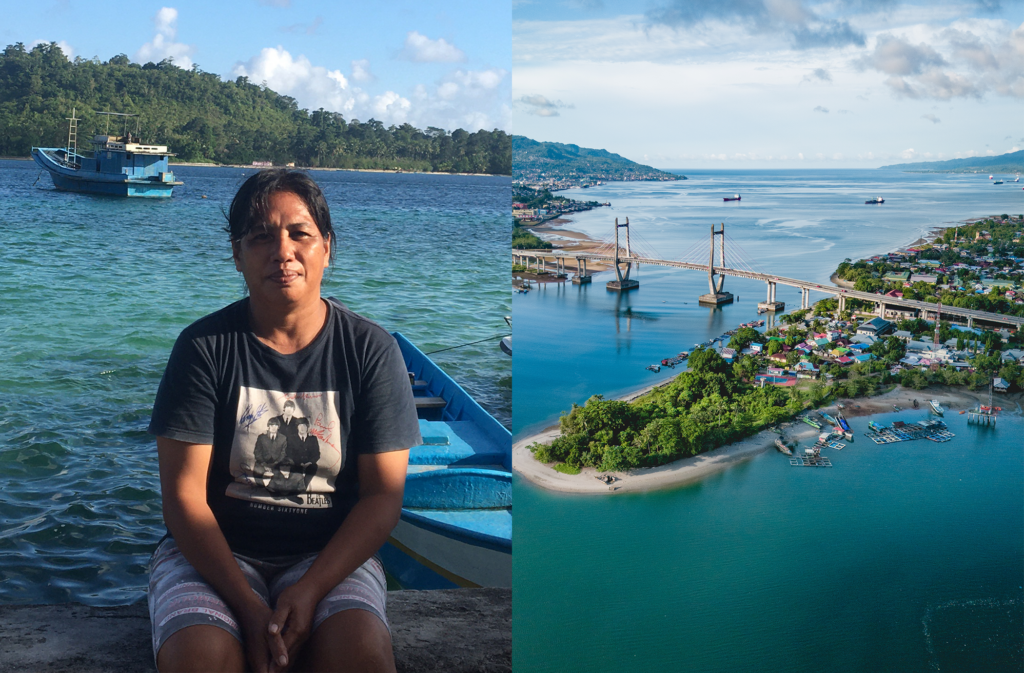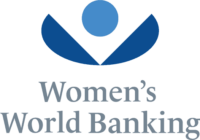Climate Change is hitting hard, and women are bearing the brunt of it, facing increased economic hardship, health crisis, and displacement.
Worse still, an increased number of women – 880 million – don’t have any way of receiving emergency relief payments in case of a climate crisis because they lack access to personal technology, digital financial capability, or connectivity to access simple digital payment services.
Despite their vital role in supporting families and communities, Women’s World Banking has calculated that 753 million women in the most climate-vulnerable regions lack even the basic financial services needed to withstand these challenges.
Our new report, “Finance, Climate, and Gender: Empowering Women Agents of Change,” highlights how financial services—savings, insurance, credit, and digital payments—are key to empowering women to adapt, endure, and lead through crises.
Meet Esther
Esther, a 45-year-old fisherwoman from Ambon Bay, Indonesia, faces financial challenges worsened by rising temperatures and unpredictable weather. Her fishing and sales are often disrupted by these challenges, reducing her income. Without proper storage facilities, she must sell her fish quickly to avoid spoilage, often at a loss. Her daily profit of IDR 100,000 (USD 6.50) goes toward household expenses, savings, and repaying microloans.

The community of women fishers shares these struggles, many falling into debt to meet basic needs. To adapt, they urgently need capital for infrastructure investments, better storage facilities, and support for reliable supplies. Access to tailored financial services—such as flexible microloans, insurance for climate-related losses, and digital payment platforms—could help Esther and her community manage their finances effectively and build resilience against future challenges.
As the world stands today, financial systems fail to address women’s specific needs, leaving them vulnerable and unprepared to protect their livelihoods.
However, women are not passive victims of climate change. They are at the forefront of preparing for and responding to climate crises, addressing early recovery needs of their families, and strengthening community building. Evidence shows that women’s representation in decision-making bodies and governments results in better climate governance and more stringent climate change policies.
Financial service providers (FSPs) and investors – along with policymakers and the donor community – have an opportunity to close this gap. Here’s how.
The role of financial services in climate change
For women, climate change is a financial inclusion problem. Not focusing financial resources on this challenge increases women’s economic instability, health challenges, and social problems.
Financial services play a critical role in helping women adapt to, mitigate, and endure the effects of climate change.
With 45 years of experience and having reached 68 million women in the past six years, we view financial access as essential for fostering women’s and girls’ resilience and prosperity. Women’s World Banking is deepening our collaboration with stakeholders across public and private sectors to accelerate women’s access and usage of scalable and commercially viable financial solutions. For example:
- Savings
Formal savings accounts offer women a secure place to store funds, shielding them from the destruction of physical cash during extreme weather events. Women with formal savings accounts experience 22% less financial loss annually compared to those holding cash and we have found that 840 million women in climate-vulnerable countries would find it difficult or impossible to cover the cost of an emergency.
Example: In India, Women’s World Banking has been working with Bank of Baroda to increase women’s savings frequency. Unfortunately, there were devastating rains in one state in 2023, creating flash floods and widespread damage to the homes and businesses of women and their families. While many people were financially devasted, the women who had saved in a financial institution had some emergency funds to fall back on.
- Insurance
Insurance protects women’s assets and livelihoods from climate impacts such as heatwaves, floods, and droughts. Only 1% of the world’s population has climate-related microinsurance, and there is a 20-percentage gender gap in climate-related microinsurance. For women living near the poverty line, insurance can be the difference between recovery and financial ruin. A modest 1% increase in insurance uptake can lead to a 0.5% increase in GDP, demonstrating its broader economic impact.
Example: Insurance can boost agricultural productivity by 16% annually, significantly benefiting smallholders. As a direct investor, one of our portfolio companies, Pula, an African insurtech, combines insurance with adaptation finance to protect farmers from climate-related financial risks. Pula aims to make agricultural insurance affordable, often subsidizing premiums through governments, NGOs, or development organizations. Their products are accessible via mobile platforms, enabling farmers to register, track, and claim payouts easily. By using satellite data and sensors, Pula enhances risk assessment and crop monitoring. Pula partners with agro companies to bundle insurance with farm inputs like seeds, ensuring coverage without extra paperwork. In Kenya, this approach has reduced income volatility due to weather risks by 30%. In Ghana, Pula’s subsidized insurance led to a 40% increase in the use of drought-resistant seeds and innovative fertilizers among farmers.
- Credit
Access to credit enables women to invest in their livelihoods, recover from economic shocks, and adapt to climate impacts. Credit provides the capital needed for women to access energy-efficient technology and adapt to changing environmental patterns, resulting in positive climate impacts and improved household conditions.
Example: A Global Network Member of ours, Annapurna Finance in India, employs a hazard mapping approach to predict and prepare for cyclone and severe weather impacts on individual customers, allowing the company to offer flexible loan terms and first responder help to clients predicted to be affected. This proactive risk assessment helps prevent potential portfolio impacts while ensuring climate resilience for its customers. With this approach, the institution can also plan and execute relief efforts using its existing infrastructure.
- Payments
Digital payments are crucial for women in climate-vulnerable regions, especially in the aftermath of natural disasters when traditional financial systems may be inaccessible. Despite their importance, 880 million women in climate-vulnerable countries still lack an easy way to receive relief payments. Providing this access offers a vital financial lifeline, enabling women to maintain financial stability during crises by quickly accessing funds from government sources or friends and family.
Example: Payments are essential to meeting life needs after a major financial crisis, exemplified by nearly all governments creating an emergency relief strategy during COVID-19. Many governments – particularly those in climate-vulnerable regions – have crafted emergency relief strategies for climate events as well. In 2020 and 2021, Women’s World Banking partnered with Indonesia’s largest cash transfer program, Program Keluarga Harapan, to ensure relief payments meet the needs of women. We found that how payments are delivered is nearly as important as the payments themselves. Designed well, government-to-person payments are both a financial lifeline and an on-ramp to financial inclusion.
Beyond financial products
For gender-responsive financial approaches to be most effective, they must be supplemented by non-financial interventions like early warning systems, community-based training, financial literacy, and access to adaptive technologies. FSPs can collaborate with organizations and policymakers to develop these solutions and provide financing for adaptive technologies like solar-powered equipment, irrigation systems, and cooling technologies that help women adapt to chronic climate realities.
The opportunity
Climate change is predicted to push 158 million more women and girls into poverty by 2050, erasing development progress worldwide.
But it doesn’t have to. By taking collective action now and prioritizing financial inclusion, we can ensure that women are not only able to survive climate disasters but can thrive as leaders in creating a sustainable world.
Women’s World Banking will continue to release new research, insights and data on the intersection of climate change and women’s financial inclusion. Follow us to stay informed!



